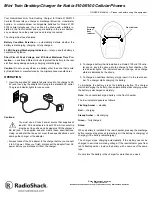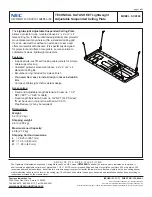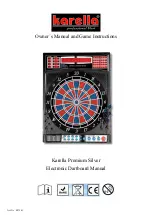
Manual, F/T Sensor, Ethernet Axia
Document #9620-05-C-Ethernet Axia-02
Pinnacle Park • 1031 Goodworth Drive • Apex, NC 27539 • Tel:+1 919.772.0115 • Fax:+1 919.772.8259 •
C-77
10.6 Write Tool Transform Command
With TCP, more advanced users can write their own software to set up a defined point of reference. For
most users, the most efficient method to use the tool transformation functionality is through either the ATI
webpages (
Section 6.6—F/T Configurations Page (config.htm)
) or a Telnet console (
Tool Transformation Functionality Through Telnet
{
uint8 command; /* Must be WRITETRANSFORM (2). */
uint8 transformDistUnits; /* Units of dx,dy,dz */
uint8 transformAngleUnits; /* Units of rx,ry,rz */
int16 transform[6]; /* dx, dy, dz, rx, ry, rz */
uint8 reserved[5]; /* Should be all zeroes. */
}
The ‘transform’ elements are multiplied by 100 to provide good granularity with integer numbers.
The distance unit codes are:
1: Inch
2:
Foot
3:
Millimeter
4:
Centimeter
5:
Meter
The angle unit codes are:
1:
Degrees
2: Radians
The response is a standard Write Response
.
10.7 Write Monitor Condition Command
{
uint8 command;
/* Must be WRITETHRESHOLD. */
uint8 index;
/* Index of monitor condition. 0-31. */
uint8 axis;
/* 0 = fx, 1 = fy, 2 = fz, 3 = tx, 4 = ty, 5 = tz. */
uint8 outputCode;
/* Output code of monitor condition. */
int8 comparison;
/* Comparison code. 1 for “greater than” (>), -1
for “less than” (<). */
int16 compareValue;
/* Comparison value, divided by 16 bit
Scaling
factor.
*/
uint8 reserved[13];
/* Should be all zeroes. */
}
10.8 Write Response
{
uint16 header;
/* Always 0x1234. */
uint8 commandEcho; /* Echoes command. */
uint8 status;
/* 0 if successful, nonzero if not. */
}
















































